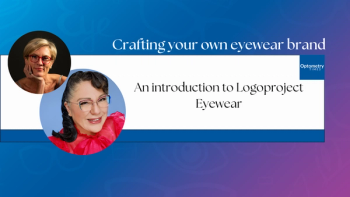
Keratoconus, crosslinking, and the changing treatment model
Keratoconus is perceived as having a small public health impact. With an estimated prevalence of ≥1/2000-considerably higher in certain parts of the world-that may be understandable.
Atlanta-Keratoconus is perceived as having a small public health impact. With an estimated prevalence of ≥1/2000-considerably higher in certain parts of the world-that may be understandable. But besides the mechanical trauma caused by this condition, patients are also stressed by the cumulative burden of visual, physical, and psychological frustration, according to Clark Y. Chang, OD, MSA, MSc, FAAO.
The onset is typically in the first or second decade of life, yet the burden from lost productivity, economic hardship, and other factors may be similar to that experienced by much older patients diagnosed with advanced age-related macular degeneration.
More from SECO 2016:
“Keratoconus does prevent people from living out their lives while they are at a very impressionable stage of their lives,” says Dr. Chang, director, specialty contact lenses, Center for Keratoconus, Cornea and Laser Institute, Hersh Vision Group, Teaneck, NJ. “If we can detect patients with this disease earlier and provide them with an explanation, even if we don't suggest any type of surgical invention but just give them an understanding of what may come in the future for them, it’s something that will make them feel a lot better and more comfortable. Then they’ll be more compliant with your suggestions; and secondly, they’ll know to come to you if they feel like something has changed.”
Diagnosis and the evolving treatment paradigm
Early detection is the key to improving productivity and stabilizing disease, and Dr. Chang recommends placing more emphasis on the signs of early disease than the textbook examples all optometrists learn for late-stage disease. Keratometry is the starting point, and most practices have this technology; however, tomography, ultrasound pachymetry, and optical pachymetry are also approaches that could be used to gather more detailed diagnostic information.
More from SECO 2016:
The treatment paradigm is also changing.
“We’re moving away from a patient-monitoring approach of waiting to see if a corneal transplant is needed,” says Dr. Chang. We want to protect the patient from further progression, so stabilizing him is becoming very important. Some experts are saying that if confirmed keratoconus is present with posterior elevation, there is perceived risk of progression and it may be possible to have discussions about treatment.”
He says that age should not be used as a qualifier of eligibility for treatment because progression may occur into the 50s.
The expanded treatment paradigm includes a patient management approach based on refractive correction, prophylaxis correlated with progression, and functional correction, Dr. Chang says.
Understanding CXL
Corneal collagen crosslinking (CXL), which is not approved by the U.S. Food and Drug Administration (FDA), is a treatment strategy that uses ultraviolet light and a photosensitizer to strengthen chemical bonds in the cornea. Riboflavin is generally used to minimize UV toxicity, but other agents are being investigated that, if effective, could change the way CXL is performed. Work is also underway to determine how long CXL lasts (currently, studies indicate that the beneficial effects have lasted up to 10 years) and how that period might be extended.
Another question debated among surgeons performing CXL is whether the epithelium should be removed to enhance the diffusion of riboflavin into the cornea. Neither the “epi-on” nor “epi-off” school of thought has earned universal acceptance from surgeons based on evidence to date-and this may be a hint to the future of CXL.
“I think the future is going to be a customization of crosslinking,” Dr. Chang says. “If you want to really maximize the crosslinking effect, then you want to see what agent reacts best with what light source as well as how much oxygen can be allowed into the stroma.”
A new hypotonic riboflavin formulation has been introduced with a loading time >45 to 60 minutes that bypasses the epithelial cell tight junction and could be used with the epi-on method of CXL, he says. At this time, the formulation (Parcel, MedioCross TE) is CE marked only.
Another development being tested is accelerated crosslinking, posing the prospect of a three-minute UV exposure vs. 30 minutes. Pulsed UV combined with accelerated CXL is also being evaluated-pulsing allows oxygen levels to replenish between UV doses. A clinical trial is underway of this technique, which is in part based on laboratory studies indicating that crosslinking involves two interrelated pathways, activated riboflavin and oxygen. Previously, it was thought that CXL involved only one reaction: the breakdown of oxygen into free radicals, providing the energy to reform corneal bonds.
Yet other developments that may eventually be approved in the United States include the combination of topographic-guided PRK with CXL and the use of CXL and intrastromal corneal ring segments.
Newsletter
Want more insights like this? Subscribe to Optometry Times and get clinical pearls and practice tips delivered straight to your inbox.













































.png)


